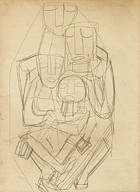Adolf Odorfer
(1902-1995)
Potter-Sculptor Adolf Odorfer followed a long and winding road to his artistic destiny. Born in Austria, Odorfer studied ceramics in Vienna, before emigrating to Brazil in the 1920s. He worked, briefly, designing pottery in Sao Paulo, then, set off on a cross-continental odyssey, lasting several years, which eventually took him to Tlaquepaque, Mexico in 1932. The resourceful Odorfer did a bit of everything along the way, cooking, herding goats, even dabbling in medicine.
In Tlaquepaque, Odorfer resumed ceramic work at the Arte Azteca pottery studio, where he met his future wife, Ella Moen, an art professor at Fresno State College in California, who was studying Mexican folk art. Odorfer followed Ella back to Fresno in 1935, set up a potter’s wheel and kiln, taught ceramics at the college (as well as false-teeth modeling to pre-dental students!) and made California his home.
Thanks to the untiring efforts of his wife, Odorfer became internationally known for his distinctive, sculptural-ceramic works in a Picasso-like, Mexican-Pre-Columbian style. A 24-foot metal statue of two cubistic figures embracing, designed by Odorfer, now stands in the Mariposa Mall of his adopted hometown of Fresno.
Ella and Adolf Odorfer were the perfect couple, totally dedicated to art-making and teaching. Their house in a forested plot in Fresno was more a museum-studio than living space, decorated on the outside with primitive white line figures and totemic sculptures. California Artist Phil Bowers, who curated exhibitions of Odorfer's work, often visited the widower artist in his later years, and found he had to navigate his way between wall-to-ceiling artifacts, collectibles, and Odorfer art pieces!
Odorfer was not religious in any conventional sense, but sacred themes often appear in his work. He told Bowers he liked Bible Stories for their “archetypal content and movement.” Odorfer is represented in the Sacred Art Pilgrim collection by a series of drawings on the themes of Adam and Eve, the Madonna and Child, and the Human Family. They are unique documents of an artistic imagination at work. His images of Mary and Jesus show the influence of Picasso and Cubism, African wood sculpture, Pre-Columbian pottery, and Central European folk art.
Odorfer was a compulsive sketcher who grabbed whatever slips of paper were at hand in moments of inspiration. He made drawings on the back of envelopes, military medical forms, mimeographed letters, even the announcement for a 1948 Ceramics Exhibition at the Wichita Art Association!
Biographical material from Odorfer Ceramics by Phil Bowers (Dumont Printing: 2006)
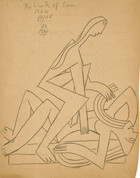
The Birth of Eve
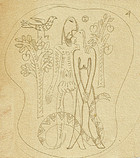
Adam & Eve I

Adam & Eve II
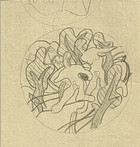
Expulsion from the Garden I
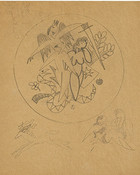
Expulsion from the Garden II
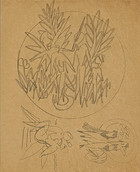
Expulsion from the Garden II (verso)
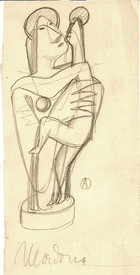
Madonna & Child
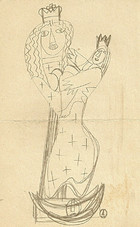
Crowned Madonna

Cubist Madonna

Madonna Enthroned
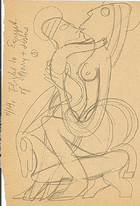
The Flight into Egypt
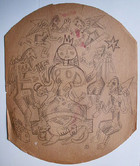
Madonna & Angels
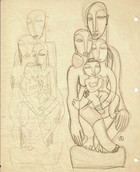
The Human Family I
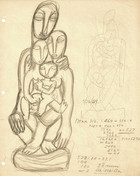
The Human Family I (verso)
